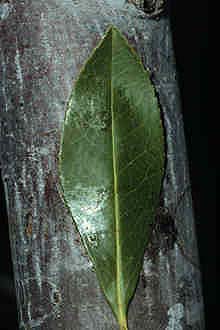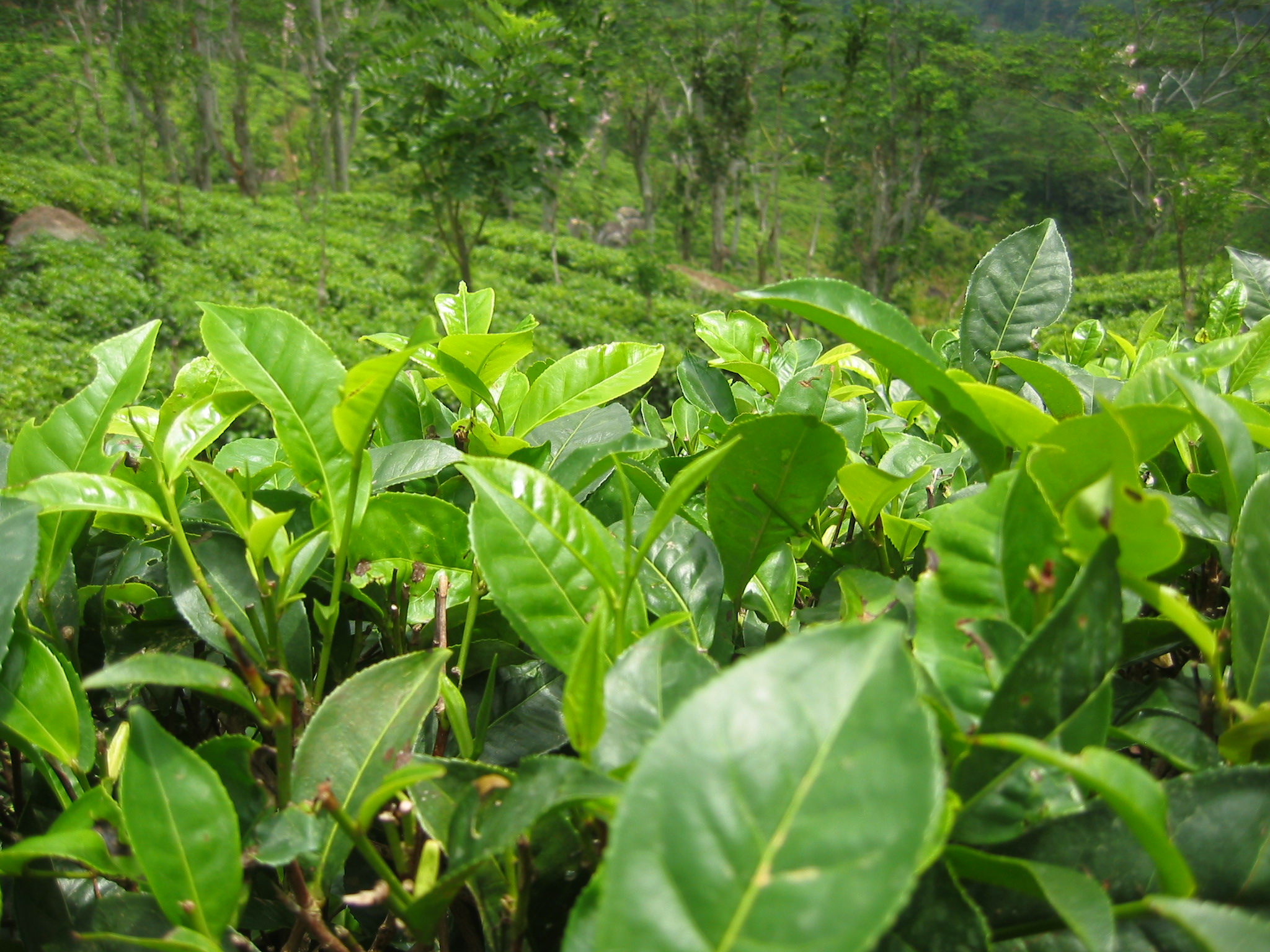|
Theaceae
Theaceae (), the tea family, is a family of flowering plants comprising shrubs and trees, including the economically important tea plant, and the ornamental camellias. It can be described as having from seven to 40 genera, depending on the source and the method of circumscription used. The family Ternstroemiaceae has been included within Theaceae;Royal Botanic Gardens, Kew. ''Vascular Plant Families and Genera''TheaceaeWatson, L., & Dallwitz, M. J. (1992 onwards). ''The families of flowering plants''/ref> however, the APG III system of 2009 places it instead in Pentaphylacaceae. Most but not all species are native to China and East Asia. Family traits Plants in this family are characterized by simple leaves that are alternate spiral to distichous, serrated, and usually glossy. Most of the genera have evergreen foliage, but '' Stewartia'' and '' Franklinia'' are deciduous. The toothed margins are generally associated with a characteristic Theoid leaf tooth, which is crowned ... [...More Info...] [...Related Items...] OR: [Wikipedia] [Google] [Baidu] |
Stewartia
:Stewartia'' as described by Philibert Commerçon is a synonym of ''Dombeya. ''Stewartia'' (sometimes spelled ''Stuartia''Sprague, T.A. (1928). The correct spelling of certain generic names. III. ''Kew Bulletin'' 1928: 337-365.Royal Botanic Gardens, Kew. ''Vascular Plant Families and Genera''TheaceaeBean, W. J. (1980). ''Trees and Shrubs Hardy in the British Isles'' 4: 507-513. .Rushforth, K. (1999). ''Collins Photographic Guide to Trees''. .) is a genus of 8-20 species of flowering plants in the family Theaceae, related to ''Camellia''. Most of the species are native to eastern Asia in China, Japan, Korea, Laos, Myanmar, Thailand, and Vietnam, with two (''S. malacodendron, S. ovata'') in southeast North America, from Virginia and Kentucky south to Florida and Louisiana.Li, J., Del Tredici, P., Yang, S., & Donoghue, M. J. (2002). Phylogenetic relationships and biogeography of Stewartia (Camellioideae, Theaceae) inferred from nuclear ribosomal DNA ITS sequences. ''Rhodora'' 104: 1 ... [...More Info...] [...Related Items...] OR: [Wikipedia] [Google] [Baidu] |
Franklinia
''Franklinia'' is a monotypic genus in the tea family, Theaceae. The sole species in this genus is a flowering tree, ''Franklinia alatamaha'', commonly called Franklinias or the Franklin tree, and native to the Altamaha River valley in Georgia in the southeastern United States. It has been extinct in the wild since the early 19th century, but survives as a cultivated ornamental tree. In the past, some botanists have included ''Franklinia'' within the related genus '' Gordonia''. The southeastern North American species ''Gordonia lasianthus'' differs in having evergreen foliage, flowers with longer stems, winged seeds, and conical seed capsules. ''Franklinia'' was often known as ''Gordonia pubescens'' until the middle of the 20th century. Description ''Franklinia alatamaha'' is a small deciduous tree or large shrub growing tall, but commonly . The tree has a symmetrical, somewhat rounded shape. It frequently suckers and can have one to five trunks. The bark is gray with vertica ... [...More Info...] [...Related Items...] OR: [Wikipedia] [Google] [Baidu] |
Gordonia (plant)
''Gordonia'' is a genus of flowering plants in the family Theaceae, related to '' Franklinia'', ''Camellia'' and ''Stewartia''. It includes 22 species native to the tropical and subtropical Americas, ranging from the southeastern United States and southern Mexico to Bolivia and southern Brazil. They are evergreen trees, growing to 10–20 m tall. The bark is thick and deeply fissured. The leaves are alternately arranged, simple, serrated, thick, leathery, glossy, and 6–18 cm long. The flowers are large and conspicuous, 4–15 cm diameter, with 5 (occasionally 6-8) white petals; flowering is in late winter or early spring. The fruit is a dry five-valved capsule, with 1-4 seeds in each section. The species are adapted to acidic soils, and do not grow well on chalk or other calcium-rich soils. They also have a high rainfall requirement and will not tolerate drought. Some botanists include ''Franklinia'' within ''Gordonia'', even though recent phylogenetic studies s ... [...More Info...] [...Related Items...] OR: [Wikipedia] [Google] [Baidu] |
Pyrenaria
''Pyrenaria'' is a genus of flowering plants in the family Theaceae. It includes 27 species native to tropical Asia, ranging from the eastern Indian subcontinent to Indochina, western Malesia Malesia is a biogeographical region straddling the Equator and the boundaries of the Indomalayan and Australasian realms. It is a phytogeographical floristic region in the Paleotropical kingdom. It was first recognized as a distinct region ..., southern China, and Taiwan. Species , the following species are accepted: References External links * * Theaceae Ericales genera Flora of the Indomalayan realm Taxonomy articles created by Polbot {{Theaceae-stub ... [...More Info...] [...Related Items...] OR: [Wikipedia] [Google] [Baidu] |
Camellias
''Camellia'' (pronounced or ) is a genus of flowering plants in the family Theaceae. They are found in tropical and subtropical areas in eastern and southern Asia, from the Himalayas east to Japan and Indonesia. There are more than 220 described species; almost all are found in southern China and Indochina. Camellias are popular ornamental, tea, and woody-oil plants cultivated worldwide for centuries. Over 26,000 cultivars, with more than 51,000 cultivar names, including synonyms, have been registered or published. The leaves of '' C. sinensis'' are processed to create tea, and so are of particular economic importance in East Asia, Southeast Asia, and the Indian subcontinent, with the processed leaves widely sold and consumed globally. The ornamental '' C. japonica'', '' C. sasanqua'' and their hybrids are the source of hundreds of garden cultivars. '' C. oleifera'' produces tea seed oil, used in cooking and cosmetics. Description Camellias are evergreen shrubs or small ... [...More Info...] [...Related Items...] OR: [Wikipedia] [Google] [Baidu] |
Camellia
''Camellia'' (pronounced or ) is a genus of flowering plants in the family Theaceae. They are found in tropical and subtropical areas in East Asia, eastern and South Asia, southern Asia, from the Himalayas east to Japan and Indonesia. There are more than 220 described species; almost all are found in southern China and Indochina. Camellias are popular ornamental, tea, and woody-oil plants cultivated worldwide for centuries. Over 26,000 cultivars, with more than 51,000 cultivar names, including synonyms, have been registered or published. The leaves of ''Camellia sinensis, C. sinensis'' are processed to create tea, and so are of particular economic importance in East Asia, Southeast Asia, and the Indian subcontinent, with the processed leaves widely sold and consumed globally. The ornamental ''Camellia japonica, C. japonica'', ''Camellia sasanqua, C. sasanqua'' and their Hybrid (biology)#Hybrid plants, hybrids are the source of hundreds of garden cultivars. ''Camellia oleifera, C ... [...More Info...] [...Related Items...] OR: [Wikipedia] [Google] [Baidu] |
Schima
''Schima'' is a genus of evergreen trees belonging to the tea family, Theaceae. The genus inhabits warm temperate to subtropical climates across southern and southeastern Asia, from the eastern Himalaya of Nepal and eastern India across Indochina, southern China, Taiwan, and the Ryukyu Islands. There are about 30 species, 21 species distributed in China (six endemic), among which '' Schima superba'' is the most common. Fossil record Fossil fruits of ''Schima'' have been described as †''Schima nanlinensis'', from the Miocene of Nanlin Formation in Longchuan Basin, Dehong Autonomous Prefecture, Yunnan Province, China. The fossil fruits are 5-loculed capsules with flat reniform seeds. The genus ''Schima'' is known as fossils from the Palaeogene and Neogene of Germany and Austria. †''Schima nanlinensis'' represents the first fossil record of the genus in Asia Asia ( , ) is the largest continent in the world by both land area and population. It covers an area of more ... [...More Info...] [...Related Items...] OR: [Wikipedia] [Google] [Baidu] |
Apterosperma
''Apterosperma'' is a monotypic genus of plants in the family Theaceae. The sole species is ''Apterosperma oblata'', which is endemic to China and is threatened by habitat loss Habitat destruction (also termed habitat loss or habitat reduction) occurs when a natural habitat is no longer able to support its native species. The organisms once living there have either moved elsewhere, or are dead, leading to a decrease .... References Theaceae Monotypic Ericales genera Flora of China Vulnerable plants Taxonomy articles created by Polbot {{Theaceae-stub ... [...More Info...] [...Related Items...] OR: [Wikipedia] [Google] [Baidu] |
Camellia Sinensis
''Camellia sinensis'' is a species of evergreen shrub or small tree in the flowering plant family Theaceae. Its leaves, leaf buds, and stems can be used to produce tea. Common names include tea plant, tea shrub, and tea tree (unrelated to ''Melaleuca alternifolia'', the source of tea tree oil, or the genus ''Leptospermum'' commonly called tea tree). White tea, yellow tea, green tea, oolong, dark tea (which includes pu-erh tea) and black tea are all harvested from two of the five varieties which form the main crops now grown, ''C. sinensis'' var. ''sinensis'' and ''C. s.'' var. ''assamica'', but are Tea processing, processed differently to attain varying levels of oxidation with black tea being the most oxidized and white being the least. Kukicha (twig tea) is also harvested from ''C. sinensis'', but uses twigs and stems rather than leaves. Description ''Camellia sinensis'' is native to East Asia, the Indian Subcontinent, and Southeast Asia, but it is today cultivated all aro ... [...More Info...] [...Related Items...] OR: [Wikipedia] [Google] [Baidu] |
Polyspora
''Polyspora'' is a genus of flowering plants in the tea family (Theaceae Theaceae (), the tea family, is a family of flowering plants comprising shrubs and trees, including the economically important tea plant, and the ornamental camellias. It can be described as having from seven to 40 genera, depending on the sour ...). It includes 47 species, which range from India through Indochina, southern China, Malesia, Taiwan and New Guinea. '' Polyspora chrysandra'' may have anti-inflammatory medicinal properties.CJ, Yang JZ, Shen ZF, Zhang DMFu HZ, Li.,"Potential Anti-inflammatory Constituents of the Stems of Gordonia chrysandra." ''J Nat Prod.'' 2011 Apr 7; Species 47 species are currently accepted: *'' Polyspora amboinensis'' *'' Polyspora ampla'' *'' Polyspora axillaris'' *'' Polyspora balansae'' *'' Polyspora bidoupensis'' *'' Polyspora borneensis'' *'' Polyspora ceylanica'' *'' Polyspora chrysandra'' *'' Polyspora cuongii'' *'' Polyspora dalglieshiana'' *'' Polyspora ... [...More Info...] [...Related Items...] OR: [Wikipedia] [Google] [Baidu] |
APG III System
The APG III system of flowering plant classification is the third version of a modern, mostly molecular-based, system of plant taxonomy being developed by the Angiosperm Phylogeny Group (APG). Published in 2009, it was superseded in 2016 by a further revision, the APG IV system. Along with the publication outlining the new system, there were two accompanying publications in the same issue of the Botanical Journal of the Linnean Society: * The first, by Chase & Reveal, was a formal phylogenetic classification of all land plants (embryophytes), compatible with the APG III classification. As the APG have chosen to eschew ranks above order, this paper was meant to fit the system into the existing Linnaean hierarchy for those that prefer such a classification. The result was that all land plants were placed in the class Equisetopsida, which was then divided into 16 subclasses and a multitude of superorders. * The second, by Haston ''et al.'', was a linear sequence of families fol ... [...More Info...] [...Related Items...] OR: [Wikipedia] [Google] [Baidu] |
Ellagic Acid
Ellagic acid is a polyphenol found in numerous fruits and vegetables. It is the dilactone of hexahydroxydiphenic acid. Name The name comes from the French term ''acide ellagique'', from the word ''galle'' spelled backward because it can be obtained from ''noix de galle'' (galls), and to distinguish it from ''acide gallique'' ( gallic acid). The molecular structure resembles to that of two gallic acid molecules being assembled "head to tail" and bound together by a C–C bond (as in biphenyl, or in diphenic acid) and two lactone links (cyclic carboxylic esters). Metabolism Biosynthesis Plants produce ellagic acid from hydrolysis of tannins such as ellagitannin and geraniin. Biodegradation Urolithins are gut flora human metabolites of dietary ellagic acid derivatives. Ellagic acid has low bioavailability, with 90% remaining unabsorbed from the intestines until metabolized by microflora to the more bioavailable urolithins. History Ellagic acid was first discove ... [...More Info...] [...Related Items...] OR: [Wikipedia] [Google] [Baidu] |




